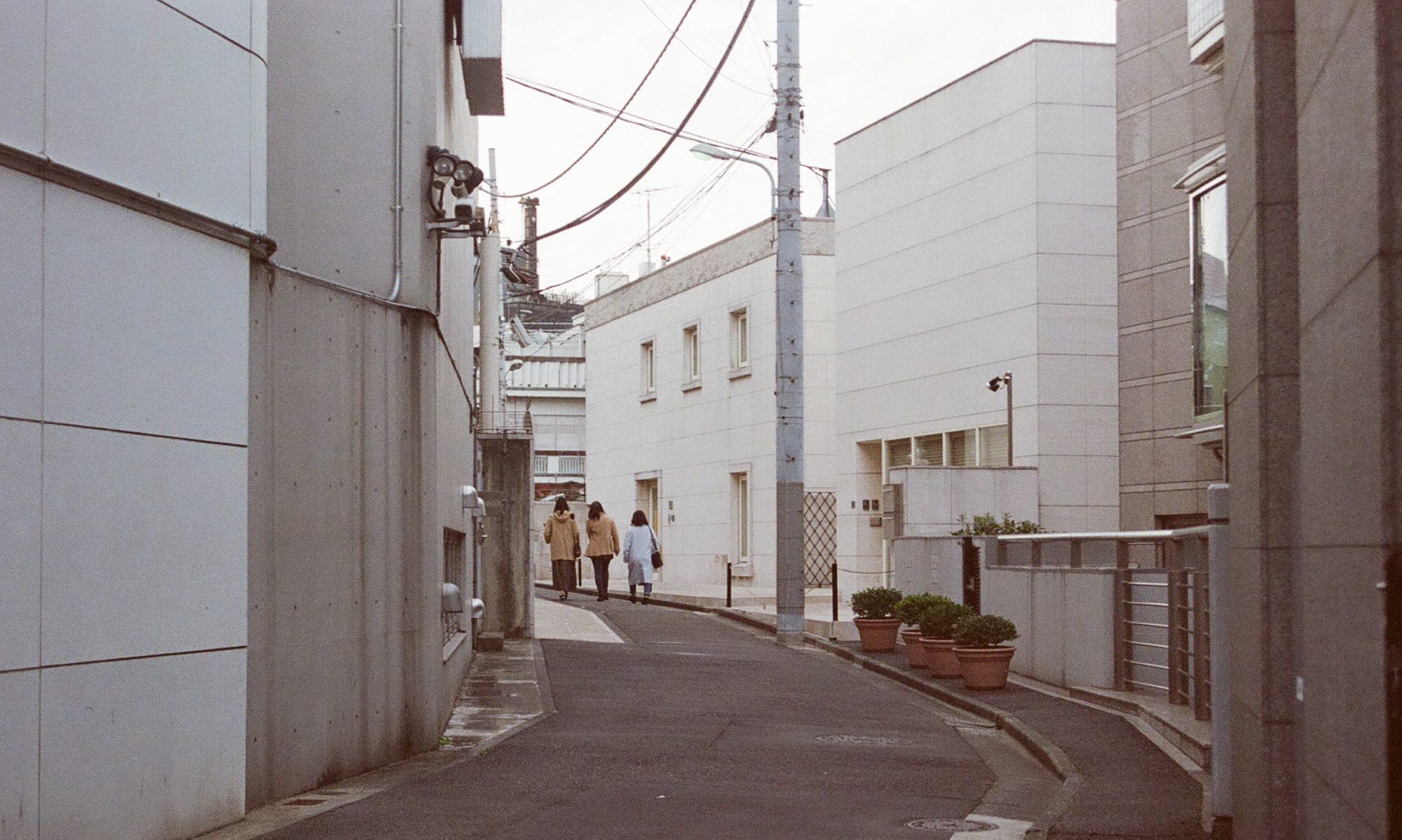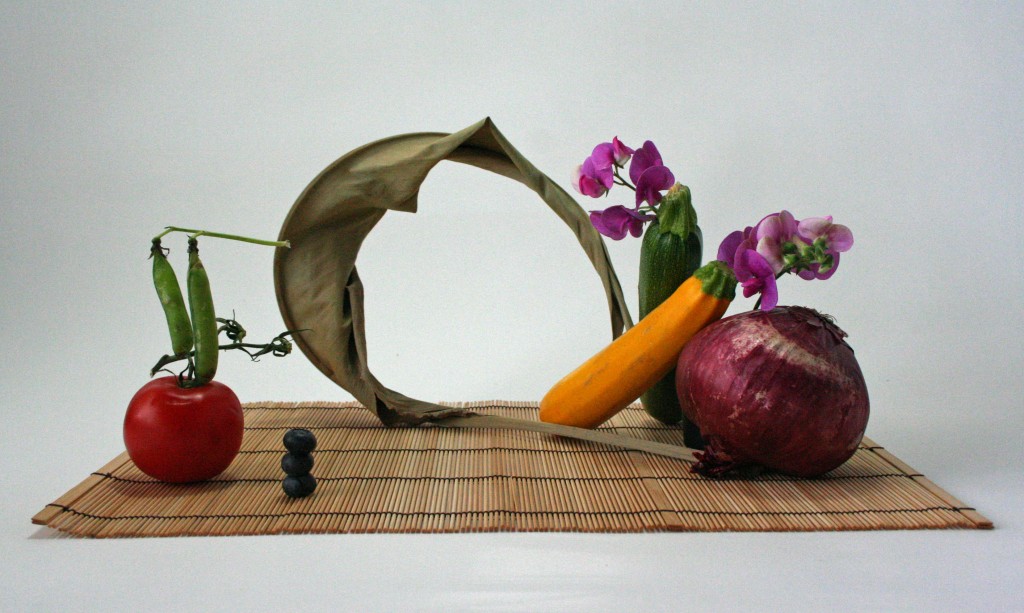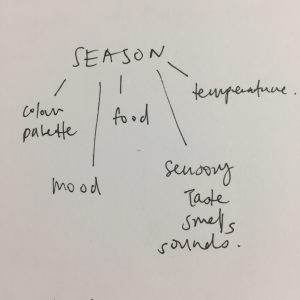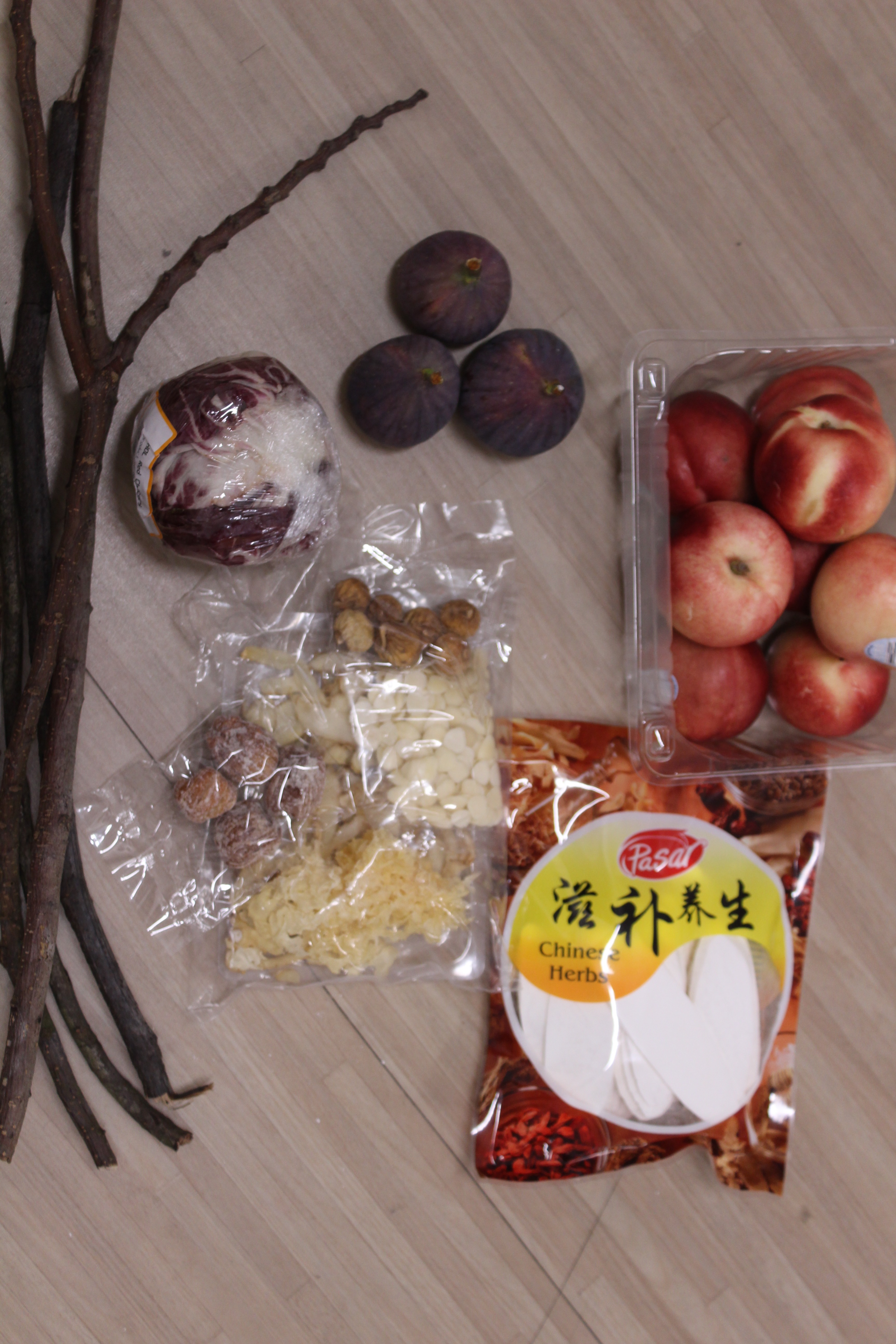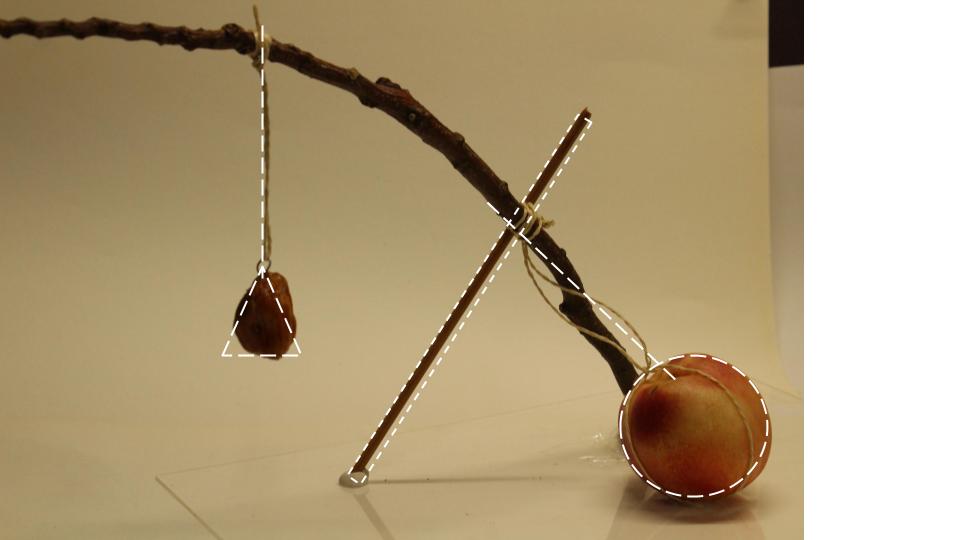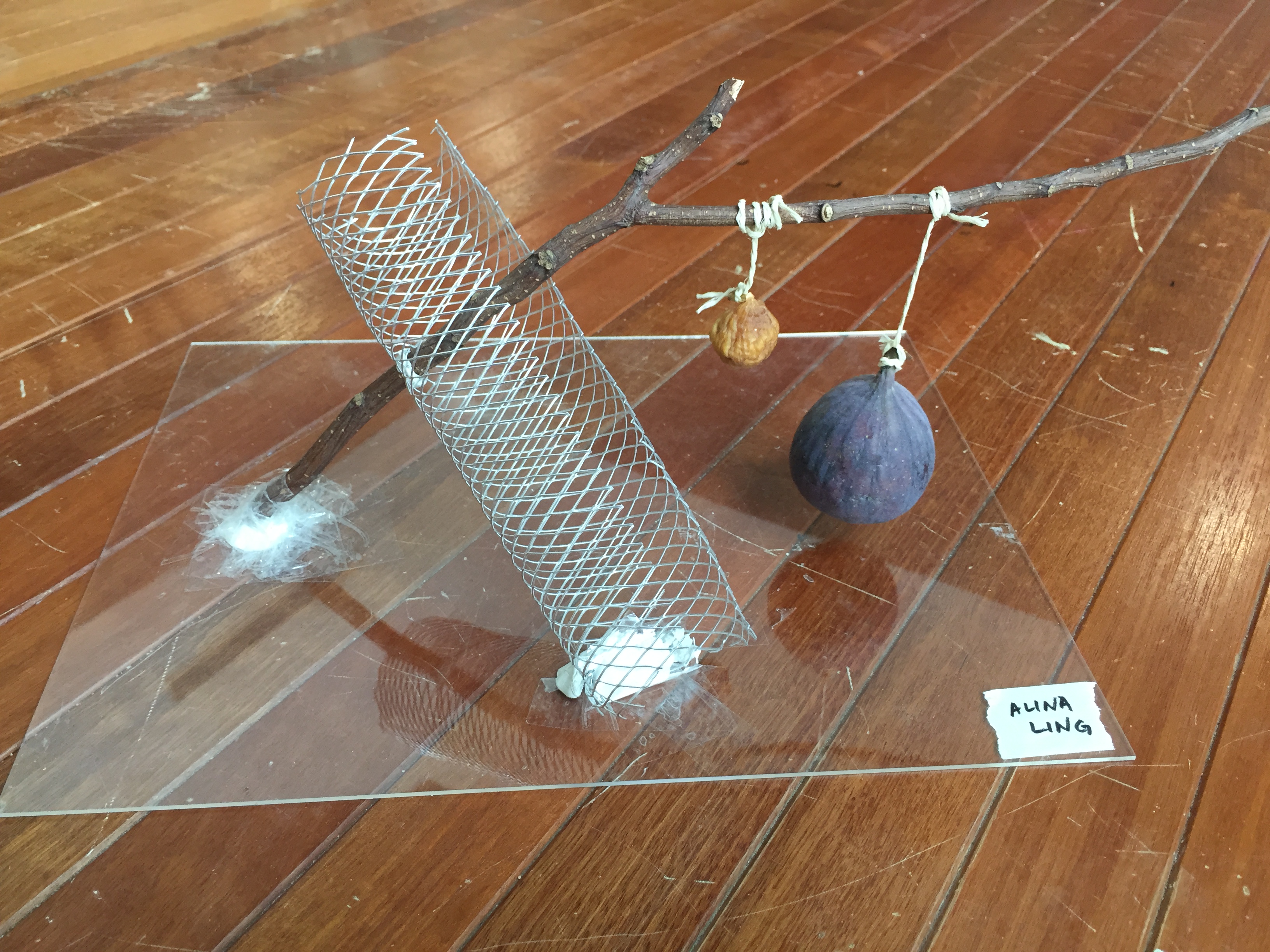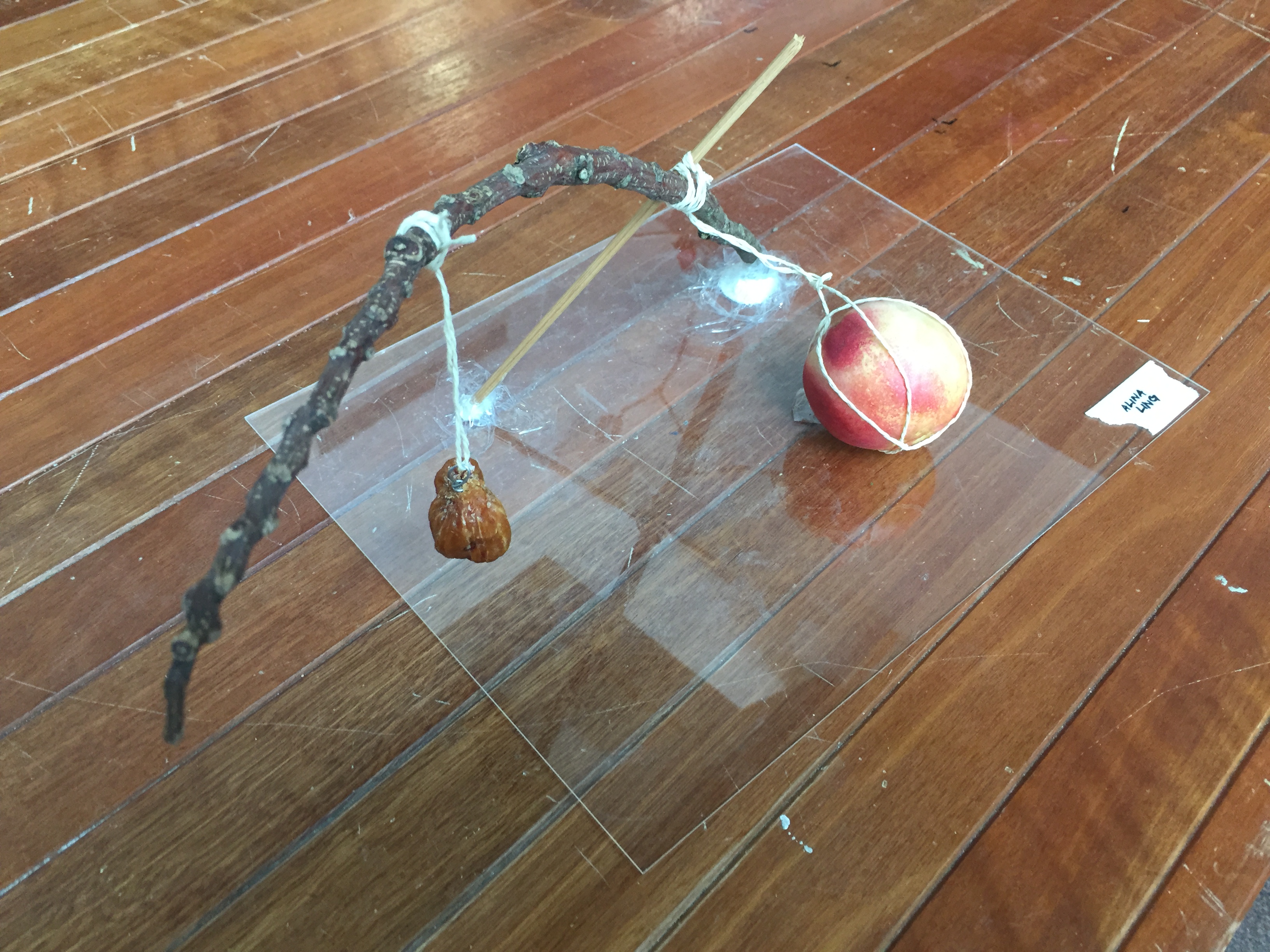GAIA’S IKEBANA
2 sketch models composed of a sphere, cone and cylinder. I played with the contrast between the diagonal axis of the cylinder in both sketch models and the smaller sphere and cone components.
MODEL 1
MODEL 2
morimono ikebana
‘Morimono’ is the ikebana arrangement composed of fruits and vegetables.
I am more interested in the arrangement of spherical and tubular objects such as fruits and vegetables compared to the traditional medium of ikebana. Inspired by the vibrant colours and the use of a few elements to bring out the quality of the fruit or vegetable.
AUTUMN
Our task was to create a composition of 5 elements with one branch, a cone, sphere and cylinder each and “something else”. My picked theme was the season AUTUMN.
Concepts:
Going with the idea of seasonal produce and to tie in with the theme of ikebana, I sourced for autumn-harvested fruits and vegetables in Japan. I filtered out fruits and vegetables with warm colours (red, orange, yellow and brown) to fit in better with the theme of autumn.
Fruits – Persimmons, Kabocha (pumpkin), Pears, Chestnuts
Vegetables – Mushrooms

Initial ideas: A morimono composition using autumn produce
Comments given – diagonals should be considered more, should not dive straight into ikebana arrangement
AUTUMN ACTIVITY – FRUIT DRYING
An autumn activity after the harvesting of persimmons in Japan is drying them. Persimmons are left out in autumn temperatures to dry to preserve and store through winter. The hanging action of the persimmon served to be the main inspiration for my ikebana compositions.



The individual hung persimmon serve as study of diagonals between the cyliner, cone and sphere equivalent of the fruit.
MATERIALS
I decided to capture the act of drying of autumn fruits in one composition, contrasting the fresh and dried fruit. The local supermarket didn’t sell fresh and dried Japanese persimmons, so I went with other autumn fruits that were in season – figs and nectarine (In the US). I bought some dried Chinese herbs that contain dried figs and dates.
For the branches, I picked out branches that are darker in colour to fit the autumn theme.
COMPOSITION 1 – figs
I used a wire mesh to create a netted cylinder to hold the branch diagonally. The fresh and dried are hung beside each other on the branch to create contrast between the act of gravity and the diagonal branch.
The act of hanging is established using string, similar to the ones used in persimmon drying. I chose to keep the composition simple and minimal to focus on the shape and action of the fruits.
Sphere – Fresh fig
Cone – Dried fig
Cylinder – wire mesh
Something else – string
Sketch Analysis:
Dominant – Branch
Sub-dominant – wire mesh and fresh fid
Sub-ordinate – string and dried fig
COMPOSITION 2 – nectarines & dates
I used the dried date to represent the dried version of the nectarine as they were similar in colour and relative size.
I played with the act of hanging of dried date with the fallen nectarine on the bottom. The diagonals of the branch and stick are interacting on one plane, while the lines of the string are on other intersecting planes.
Sphere – Nectarine
Cone – dried date
Cylinder – wooden stick
Something else – String
Sketch analysis:
Dominant – Branch
Sub-Dominant – stick and nectarinee
Sub-ordinate – string and dried date
FINAL
Comments – Composition 1: change the angle of wire mesh as it is along the same plane as the branch
